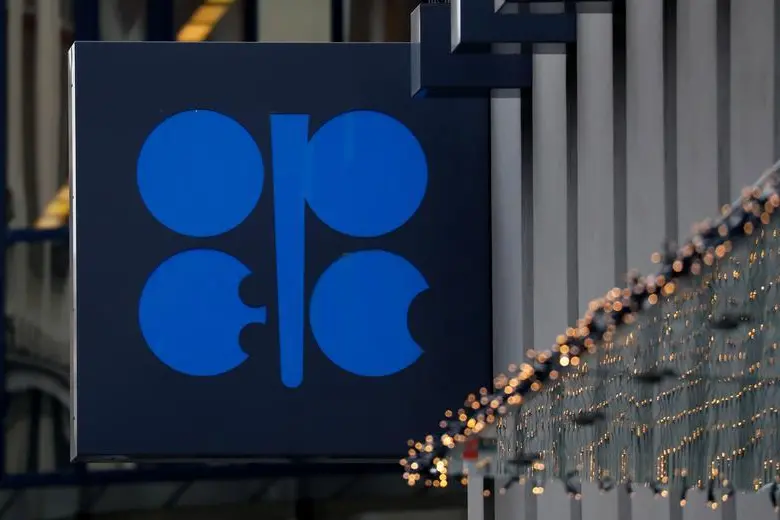PHOTO
(The opinions expressed here are those of the author, a columnist for Reuters.)
LAUNCESTON, Australia - The OPEC+ decision to extend crude oil production cuts is an acknowledgment that demand growth is still uncertain, but also that the group remains hopeful its bullish scenario is correct.
The Organization of the Petroleum Exporting Countries (OPEC) and its allies including Russia, agreed at a meeting on Sunday to extend the total of 5.86 million barrels per day (bpd) of output reductions.
Within that broader figure the exporter group decided to extend 3.66 million bpd of cuts that were due to expire at the end of June 2024 until the end of next year.
Additional voluntary reductions of 2.2 million bpd by eight members, including leading exporters Saudi Arabia and Russia, were prolonged by three months to the end of September.
Putting the extension of the larger section of the output cuts together with the possible rolling back of the smaller voluntary reductions shows OPEC+ is effectively betting that oil demand is going to be stronger in the second half of 2024.
Keeping the 3.66 million bpd of cuts until the end of 2025 is a reflection that OPEC+ holds much of the world's spare production capacity, but also that supply growth from outside the group has been enough to meet the increase in global demand.
Planning on phasing out the additional 2.2 million bpd of voluntary cuts in the fourth quarter is the hope that the OPEC forecast for global demand growth of 2.25 million bpd is going to turn out to be on the money.
It may be a coincidence that the OPEC forecast for world demand growth almost exactly matches the OPEC+ voluntary production cuts.
But if the OPEC estimate proves accurate, it implies that oil prices will at least remain at current levels while allowing the eight OPEC+ members subject to the voluntary cuts to increase their output and make more money.
However, the risk for OPEC+ is that world demand growth disappoints amid ongoing tighter monetary policy to combat sticky inflation, continuing geopolitical conflicts and uncertainty surrounding the U.S. presidential election in November.
OPEC+ is probably also concerned about the state of demand growth in Asia, the top-consuming region and the engine room of its forecast for global growth of 2.25 million bpd this year.
The May monthly outlook from OPEC estimated total Asian demand growth of 1.27 million bpd in 2024.
If that forecast is to be realised it would suggest that Asia's imports would be rising strongly, but so far in 2024 they haven't.
SOFT ASIA
Asia's crude imports for the first five months of the year were 27.19 million bpd, up a mere 100,000 bpd from the same period in 2023, according to data compiled by LSEG Oil Research.
This means that Asia's demand for oil is going to have to surge in the second half of the year for OPEC's optimism to prove correct.
The question for the market is whether a strong recovery in demand is likely in Asia.
The answer is that much will depend on what happens in China, the world's second-biggest economy and also the largest crude importer.
Economic signals from China have been somewhat mixed, with the property sector struggling to recover and uneven results from manufacturing and consumer spending.
For crude oil, China's imports have been soft, and may even show a year-on-year decline for the first five months.
Taking official customs data for the first four months of 2024 and adding LSEG's forecast for May imports gives a figure of 10.97 million bpd for the first five months of the year, which is 210,000 bpd below the customs number of 11.18 million bpd for the same period in 2023.
It's possible that China's crude oil imports will rebound in the second half, especially if Beijing's stimulus measures start to bear fruit.
If this is the case then OPEC+ can wind back the voluntary 2.2 million bpd of output cuts.
But if China, and the rest of Asia, remains soft for crude imports, then OPEC+ has the flexibility to keep the additional restrictions in place.
OPEC+ most likely wants to keep crude oil prices above $80 a barrel and more likely closer to $90, and the current Brent futures price of $80.78 is no doubt a concern.
It may be helpful for the group to consider if using their market muscle and generally low production costs to pump more oil and allow the price to drop to closer to $60 would serve them better.
This would allow a faster easing of monetary policy around the world by cutting inflation, while at the same time putting pressure on high-cost producers, such as U.S. shale oil.
The opinions expressed here are those of the author, a columnist for Reuters.
(Editing by Sam Holmes)












